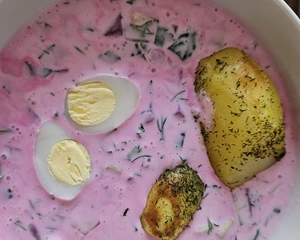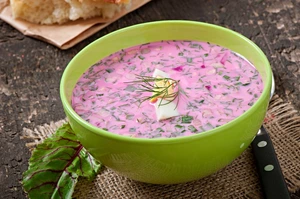Lithuanians have been enjoying the pink soup, šaltibarščiai, since the 18th century. Today, it is still an integral part of the Lithuanian summer experience. Although the composition and preparation methods of the dish have changed over the years, its popularity has remained strong. With the Vilnius Pink Soup Fest approaching, a KTU food science expert shares her insights into the evolution of this unique dish, offering advice on how to prepare it for optimal health benefits.
Aelita Zabulionė, Head of Sensory Analysis Research Laboratory at Kaunas University of Technology (KTU), is convinced that the greatest benefit of the pink soup is its versatility.
Proper preparation of products
There is no scientific consensus on whether or not šaltibarščiai is healthy. According to Zabulionė, many factors should be considered before reaching a conclusion. The healthfulness of a dish is determined by factors such as the frequency of consumption, the composition and the overall dietary diversity of the individual. As this product is only consumed during the warm season, the researcher draws attention to the sensitivity of the ingredients to environmental conditions.
“The rennet, yoghurt or kefir used to make šaltibarščiai are live fermented products that are good for your health and rich in beneficial microorganisms. However, the medium is also conducive to the growth of harmful microorganisms. For this reason, the pink soup should be kept refrigerated until consumption and not left in a hot environment for any longer than necessary,” says Zabulionė.
Attention should also be paid to the various herbs, leafy vegetables and cucumbers used. It is recommended to wash them thoroughly under running water. This ensures microbiological safety.
She reminds us that, when food is stored in the fridge for a long time, it is important to check for signs of deterioration, such as changes in appearance, colour or odour. If you have any concerns, do not consume the pink soup.
Technology is changing even šaltibarščiai
The most interesting thing about the pink soup is that technological advances have had a significant impact on its recipe. According to Zabulionė, in the past, šaltibarščiai was made with the stems and leaves of beetroot rather than the root itself. Nowadays, this version of a pink soup is more of a gastronomic treat than an everyday dish.
“We have now learned to preserve the autumn harvest – beetroot – for much longer than before. We have a wide variety of vegetables and greens all year round, which is not a bad thing. Longer shelf life is not created by preservatives, but by vacuum packaging, low-temperature pasteurisation, and storage at controlled ambient temperature and humidity,” says Zabulionė.
The KTU scientist adds that in the past, šaltibarščiai used to contain not only spring greens – onion leaves, dill, sorrel, but also cooked meat, fish, grits, asparagus, cauliflower or even crayfish tails.
“Although I find it hard to imagine such combinations on a table today, it seems that this was more than just a quick and easy dish. From the outset, it was probably realised that this recipe could be transformed into something very luxurious and sophisticated,” says Zabulionė.




